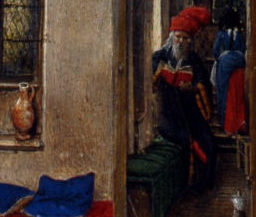New Blog Post: Biblical Building Blocks: Traces of Use in a Fifteenth Century “Delftse Bijbel”; by Judith Bleeker

A new blog post, written by Judith Bleeker, has gone up on the Cities of Readers blog.
In 1477, a Middle Dutch Bible was printed for the first time in Delft (the Netherlands). The choice for the vernacular makes clear that the “Delftse Bijbel” was oriented not only towards the clergy, but also included laypeople as its intended audience. These Bibles, which could for instance be read in silence for the purposes of Bible study and meditation, or out loud by the head of the family, must have taken up an important function in the households of their lay owners. However, medieval readers also treated their Bibles as objects of use, which meant that in addition to reading from them, they also did not hesitate to annotate them, underlining important passages, or even correcting the text where the printer had made mistakes.
However, the Bible as object of use could also fulfil a function beyond the religious.
To find out how, read the blog.
| Last modified: | 13 September 2018 09.54 a.m. |
More news
-
04 July 2025
University of Groningen awards various prizes during Ceremony of Merits
The UG awarded different prizes to excellent researchers and students during the Ceremony of Merits on 4 July 2025.
-
02 July 2025
Relinde Weil reappointed as a member of the Supervisory Board UG
The Minister of Education has reappointed Relinde Weil for a second term as a member of the Supervisory Board of the University of Groningen.
